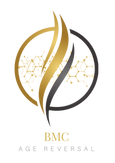HYPERBARIC OXYGEN THERAPY (HBOT)
Hyperbaric oxygen therapy (HBOT) is a medical treatment that delivers
100% oxygen to a person within a pressurized chamber
The use of hyperbaric oxygen therapy (HBOT) in antiaging medicine is a topic that has gained interest among many Medical Doctors over the world. Proponents of HBOT in the context of antiaging medicine suggest that the increased oxygen levels delivered during the therapy may have various potential benefits for overall health and aging. Some of mechanisms and areas of interest include:
Cellular rejuvenation: It is theorized that the increased oxygen levels in the body during HBOT may enhance cellular function and promote cellular repair processes, potentially slowing down the aging of cells.
Longevity strategy maintenance: HBOT can ride of excess of Senescent cells, often referred to as “zombie cells,” are cells that have stopped dividing and entered a state of permanent growth arrest without undergoing cell death, also helps to length telomeres.
Reducing inflammation: Chronic inflammation is associated with aging and age-related diseases. HBOT has been suggested to have anti-inflammatory effects, and proponents propose that this may contribute to its potential antiaging benefits.
Stimulating stem cell activity: Some researchers and practitioners believe that HBOT may stimulate the activity of stem cells, which play a role in tissue repair and regeneration.
Improved mitochondrial function: The increased oxygen availability during HBOT might support mitochondrial function, the energy-producing structures within cells, potentially influencing overall cellular energy metabolism.
Antioxidant effects: Oxygen is essential for life, but it can also generate free radicals that contribute to oxidative stress and aging. Proponents of HBOT in antiaging medicine suggest that the therapy’s antioxidant effects may help counteract oxidative stress.
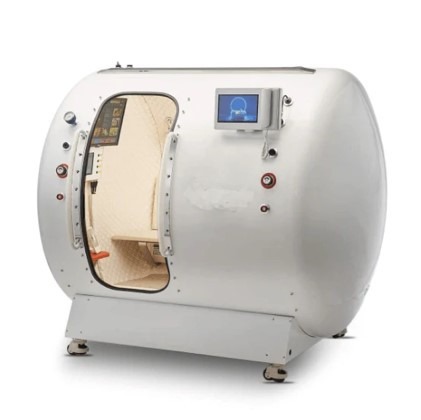
Hiperbaric oxygen therapy (HBOT) is a medical treatment that involves breathing pure oxygen in a pressurized room or chamber. While it has been traditionally used to treat conditions such as decompression sickness in divers, carbon monoxide poisoning, and non-healing wounds, some practitioners in the field of functional medicine have explored its potential applications for various health issues.
In functional medicine, the approach is often holistic, focusing on the underlying causes of health problems rather than just treating symptoms. Some proponents of hyperbaric oxygen therapy in functional medicine suggest that it may have benefits for conditions such as:
Chronic inflammatory conditions, Autoimmune disorders, Neurological conditions, Chronic infections, etc.
It’s important to note that while there is some research supporting the use of hyperbaric oxygen therapy for specific medical conditions, the evidence for its effectiveness in the context of functional medicine can vary from patient to patient.
GENERAL BENEFITS OF HBOT:
Hyperbaric oxygen therapy (HBOT) offers a range of benefits, particularly for certain medical conditions. The therapy involves breathing pure oxygen in a pressurized chamber, which increases the amount of oxygen in the blood and, consequently, the oxygen available to tissues throughout the body. Here are some well-documented benefits of HBOT:
1. Enhanced wound healing:
Chronic wounds: HBOT is particularly effective in promoting the healing of chronic, non-healing wounds, such as diabetic foot ulcers, venous stasis ulcers, and pressure sores.
Radiation injuries: HBOT can help repair tissues damaged by radiation therapy, such as those seen in patients with radiation cystitis, proctitis, or osteoradionecrosis.
2. Treatment of infections:
Osteomyelitis: HBOT can be beneficial in treating refractory osteomyelitis, a severe bone infection that does not respond well to conventional treatments.
Necrotizing infections: It is also used for severe infections like necrotizing fasciitis, commonly known as flesh-eating disease, to enhance antibiotic efficacy and improve tissue oxygenation. The increased oxygen supply offered by hyperbaric oxygen therapy assists in bacterial killing through improving leukocyte (type of white blood cell) function
Hyperbaric oxygen therapy as a supportive therapy for COVID-19 patients: Hyperbaric oxygen treatment (HBOT) is thought to boost tissue oxygenation by increasing plasma soluble oxygen levels. HBOT also reduces inflammatory responses in COVID-19 patients, minimizing the negative impacts of the cytokine storm.
An emerging therapy for post–COVID-19 condition& long covid: Most studies found that HBOT can improve quality of life, fatigue, cognition, neuropsychiatric symptoms, and cardiopulmonary function.
3. Reduction of inflammation and edema:
HBOT can reduce inflammation and swelling, which is particularly useful in conditions such as traumatic brain injury (TBI) and compartment syndrome.
4. Enhanced recovery from surgery:
Post-surgical recovery can be improved with HBOT, particularly in surgeries where there is a significant risk of ischemic injury or poor wound healing.
5. Improved outcomes in traumatic brain injury (TBI) and stroke:
Some studies suggest that HBOT can improve neurological outcomes in patients with traumatic brain injuries and strokes by reducing brain swelling and promoting neuroplasticity.
6. HBOT effects the blood flow
Normal blood flow There is 21% oxygen in the air that we breathe, and our lungs transfer this oxygen to our red blood cells (via hemoglobin). These oxygen-filled red blood cells are carried around the body by the plasma (fluid), which travels through the blood vessels. The oxygen diffuses into the surrounding tissue ensuring that it is delivered to where it is needed most.
7. Potential anti-inflammatory and antioxidant Effects:
HBOT may have broader systemic effects by reducing inflammation and oxidative stress, contributing to overall tissue repair and recovery.
8. Support for stem cell proliferation:
Research indicates that HBOT can stimulate the release and activity of stem cells, which play a crucial role in tissue repair and regeneration.
9. Increases the production of collagen
As hyperbaric oxygen therapy markedly increases the oxygen available within the blood this in turn enables for a cross-linking or strengthening of the tissues, and fibroblasts to produce increased amounts of collagen required for healing of wounds and tissue damage.
10. Increases the production and improves the action of osteoblast and osteoclasts
The provision of increased levels of oxygen allows for increased production of these cells and enables them to conduct bone repair and formation more adequately through the reduction of edema and growth of new blood vessels in the micro-circulation.
11. Stimulates new Capillary growth
The increased oxygen supply and increased pressure employed by hyperbaric oxygen supply are both responsible for the stimulation of new capillary growth and the repair of existing capillaries.
12. Enhanced Athletic Performance and Recovery:
Some athletes use HBOT to speed up recovery from injuries and improve overall performance by enhancing oxygen availability to muscles and reducing inflammation, promotes grater tissue strength
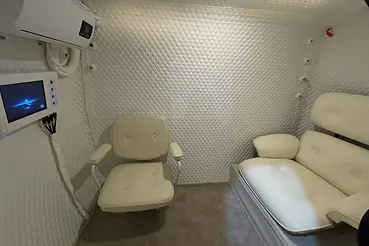
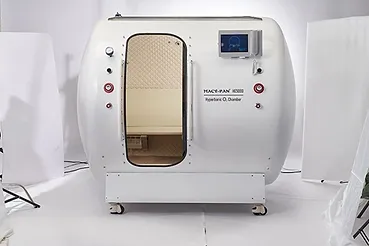
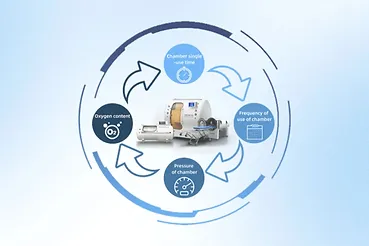
Conclusion
While these benefits are well-supported for certain conditions, the use of HBOT for other indications, such as antiaging or general wellness is in study and every day we have more evidence of the effectiveness of this therapy.
It’s important to undergo HBOT under the supervision of qualified healthcare professionals, as there are potential risks and contraindications associated with the therapy. At BMC Clinic our Medical Doctors are certify in HBOT Therapy.
